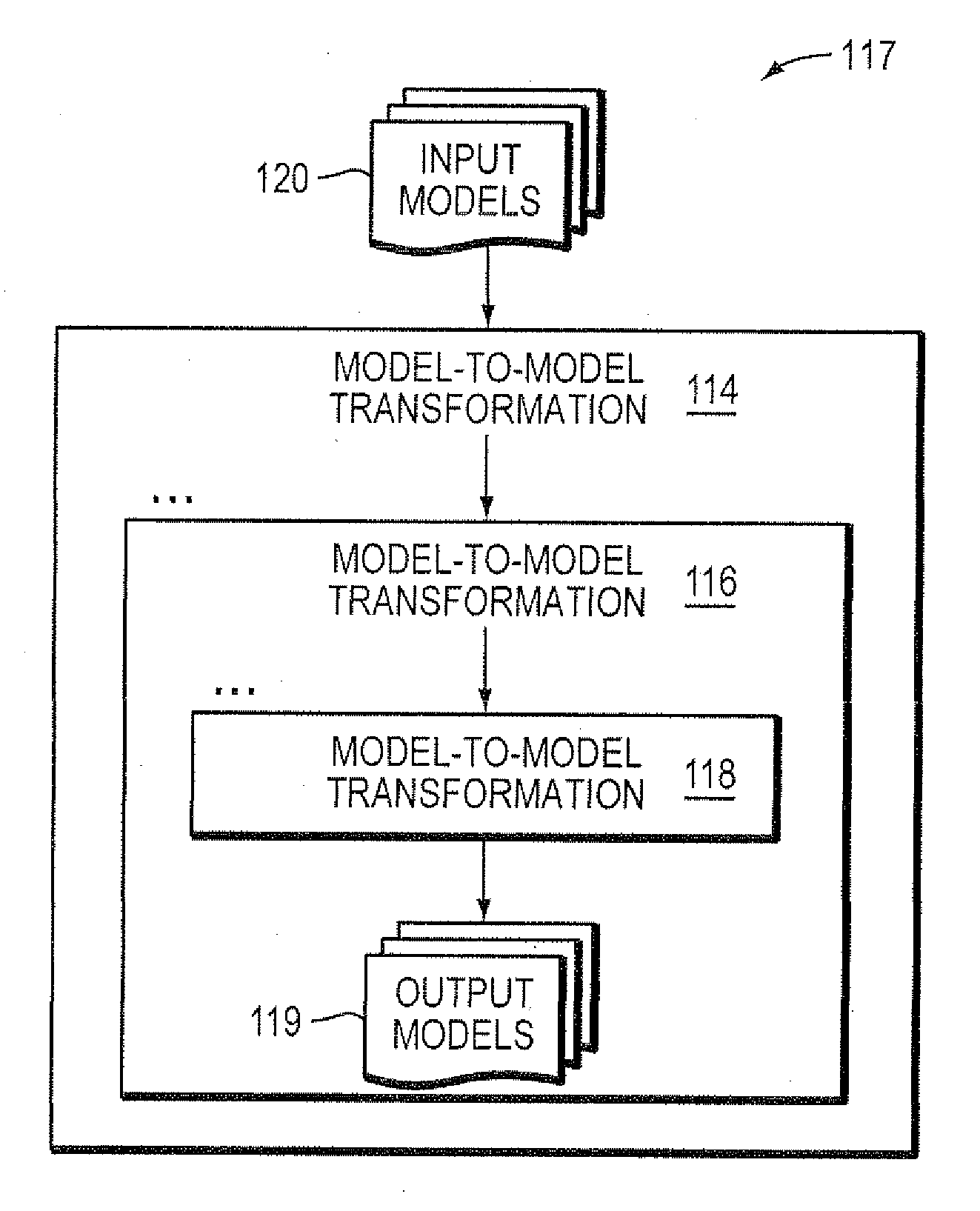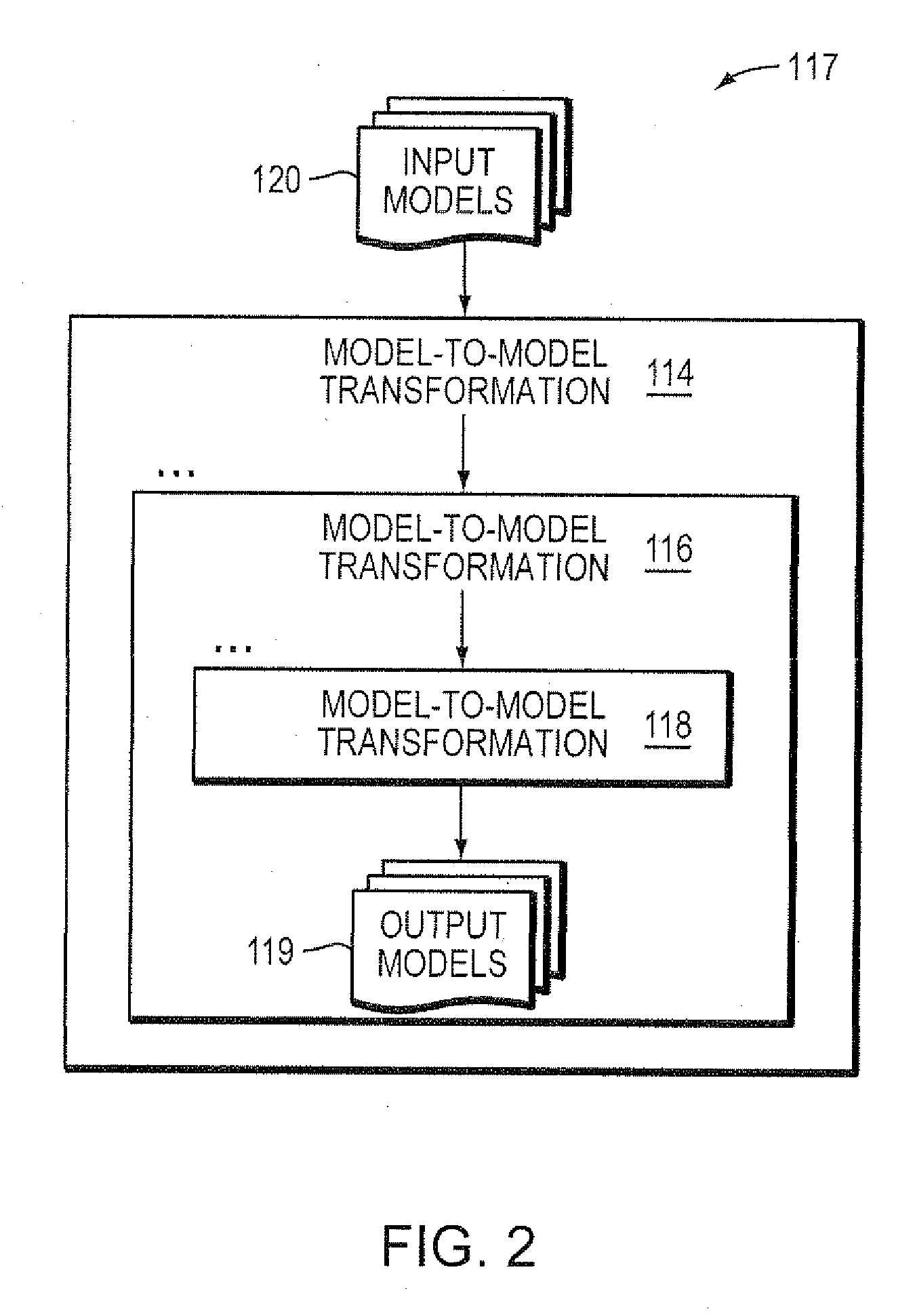Computer Method and Apparatus for Chaining of Model-To-Model Transformations
a technology of model-to-model transformation and computer method, which is applied in the field of computer method and apparatus for chaining model-to-model transformations, can solve the problems of reducing the possibility of reusing each transformation individually and the possibility of configuration, and complicating chaining, so as to facilitate reuse and facilitate configuration. precise
- Summary
- Abstract
- Description
- Claims
- Application Information
AI Technical Summary
Benefits of technology
Problems solved by technology
Method used
Image
Examples
Embodiment Construction
[0016]A description of example embodiments of the invention follows.
[0017]A typical monolithic transformation 112 takes the input models 111, pre-processes 113 them, applies the transformation logic 115, and then post-processes 117. The result produces the output models 119. FIG. 1 shows such a typical monolithic transformation approach 112. Note that the shaded parts (namely pre-preprocessing 113 and post-processing 117) should not strictly be part of the transformation 112 but rather part of the reusable or global chain processing steps. For example, the pre-processing phase 113 of input models 111 usually involves loading them from their storage into memory, which usually needs to be done only by the first transformation in a chain. The same argument applies for the post-processing phase 117, which typically runs after the last transformation in the chain and involves saving the in-memory output models 119 into storage, merging them into other models or invoking other (model-to-m...
PUM
 Login to View More
Login to View More Abstract
Description
Claims
Application Information
 Login to View More
Login to View More - R&D
- Intellectual Property
- Life Sciences
- Materials
- Tech Scout
- Unparalleled Data Quality
- Higher Quality Content
- 60% Fewer Hallucinations
Browse by: Latest US Patents, China's latest patents, Technical Efficacy Thesaurus, Application Domain, Technology Topic, Popular Technical Reports.
© 2025 PatSnap. All rights reserved.Legal|Privacy policy|Modern Slavery Act Transparency Statement|Sitemap|About US| Contact US: help@patsnap.com



